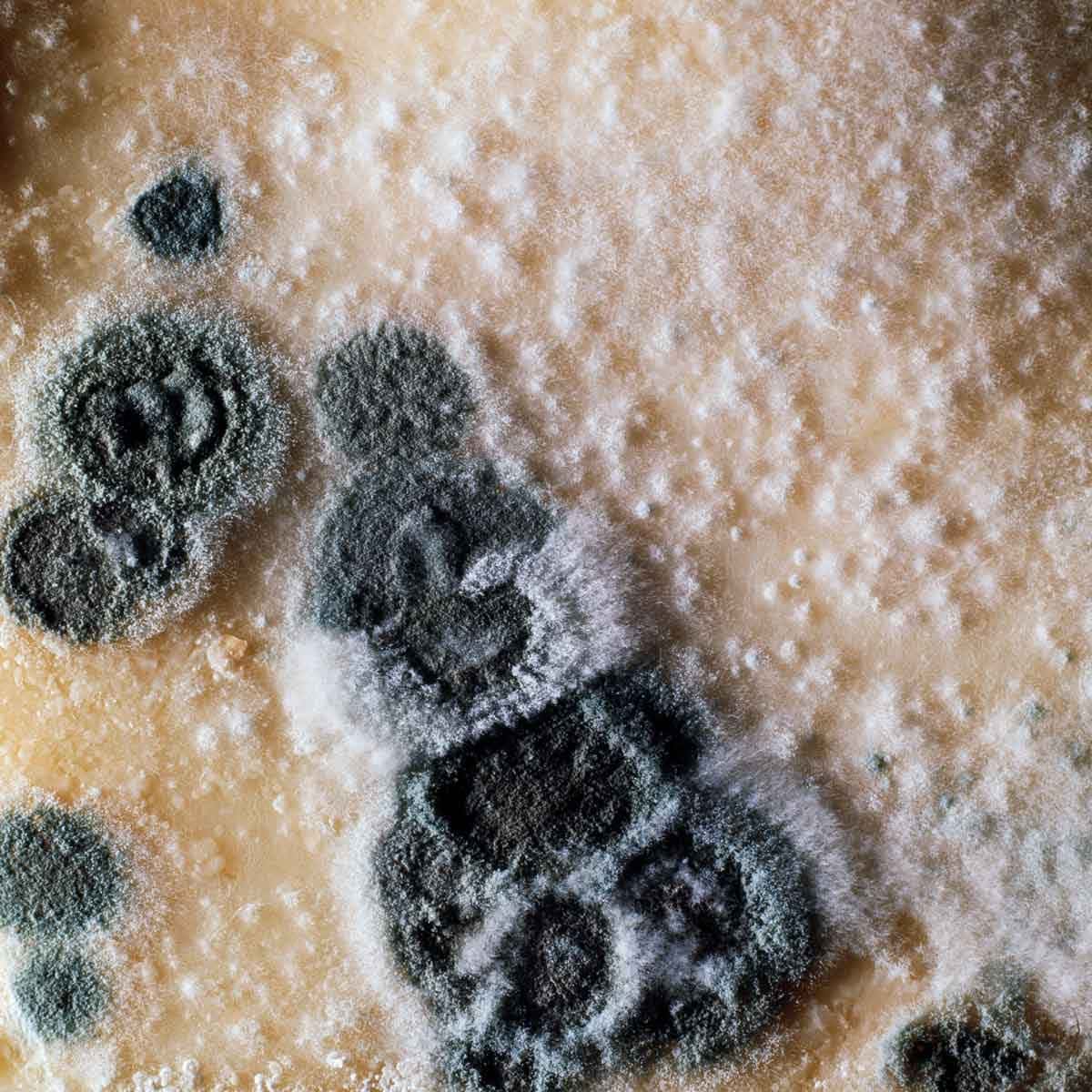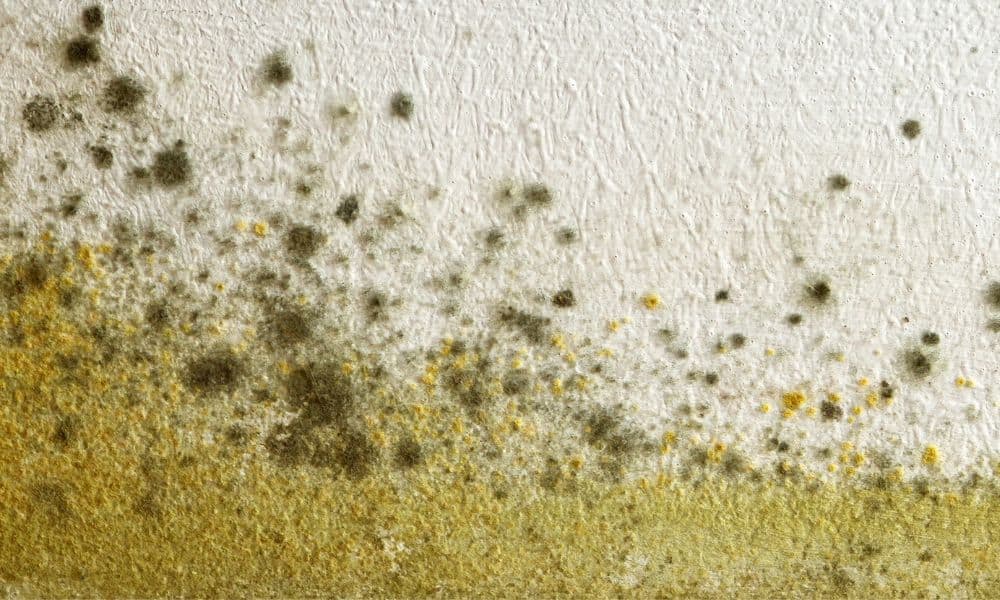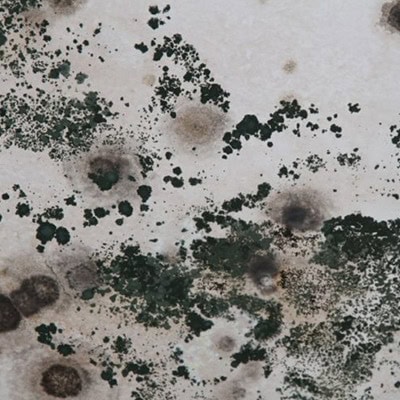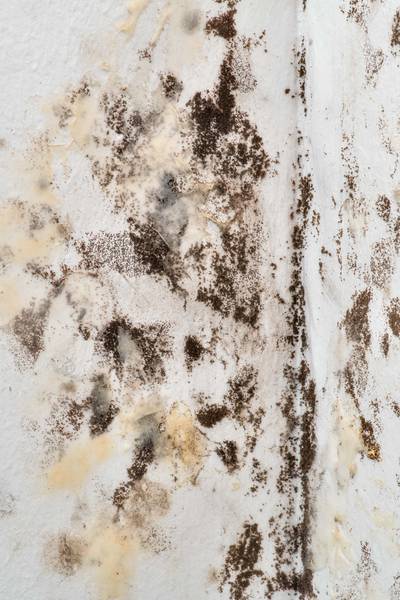- THE DANGER OF MOLD -
WHAT IS MOLD?
Mold, classified as a microorganism and type of fungus, is considered to be a multicellular organism as opposed to unicellular, such as yeast and candida. Mold spores are microscopic (2-10 u m) and naturally present within the environment. Their primary purpose as a decomposer is to decay/break down dead organic material where its nutrients can then be recycled back into the environment. Some mold spores are easily disturbed and become airborne and settle repeatedly with each disturbance. Other molds have “sticky” spores that cling to surfaces and are not as easily disturbed. Some species of mold produce mycotoxins that can pose a serious health risk to both humans and animals.
- KNOW MORE ABOUT MOLD -
COMMON TYPES OF MOLD

Penicillium/ Aspergillus
A common mold that can cause allergic reactions, as well as capable of producing mycotoxins. This genus typically grows under high humidity conditions.

Cladosporium
Generally believed to be a low risk for producing mycotoxins, although its spores can cause allergic reactions.

Stachybotrys
Commonly known as "black mold" found in water-damaged buildings and capable of producing some of the most toxigenic mycotoxins known to exist.

Chaetomium
Similar to Stachybotrys and often referred to as the “other black mold.”
- FAQs -
ABOUT TYPES OF MOLD
Mycotoxins (myco as a prefix meaning fungal) are chemical metabolites produced by some species of mold as a toxic byproduct. They are produced by mold as a part of its metabolic process – any process to sustain life, such as converting food into energy. Mycotoxins can be produced by mold as a defense mechanism to survive against other fungi, bacteria, viruses, insects, etc. competing for the same nutrients. Some mycotoxins can cause a toxic response (inflammation/neuroinflammation/neurotoxins) in humans and animals, even in small amounts. Although produced by mold, they are not a living part of mold so they cannot be “killed”, only broken down. There are over 400 different mycotoxins that can affect every system/organ in the body.
- HOW MOLD SPREADS -
REASONS MOLD CAN BECOME AIRBORNE
- Reproduce: Molds release their spores so that they can reproduce. They reproduce whenever a viable (alive) mold spore encounters organic material with adequate moisture content.
- Evaporation: Whenever mold dries out or goes dormant, it can become more easily airborne because of its lighter weight; allowing hundreds, if not thousands of spores and fragments to be released into the air.
- Aggressive Growth: Mold can become territorial and release spores and mycotoxins into the air to kill competitors competing for the same food source.
- Disturbance: Mold spores and mycotoxins can become airborne if the colony is disturbed. Two common examples are touching and spraying it.
- Stack Effect (Air Movement): Simply put, the stack effect occurs because of the air seeking equilibrium due to pressure differentials between two spaces. As air is carried from one space to another, allergens, mold spores, mycotoxins, humidity, and VOCs are carried with it.
- HVAC System: HVAC systems are common culprits that circulate mold within a home. The air movement within the system can cause spores to become detached from their colony.

- KNOWLEDGE IS POWER -
MOLD AND YOUR HEALTH
Mold and mycotoxins can cause a variety of adverse health effects and pose a serious health threat to humans. When inhaled, ingested, or come into contact with skin, these toxins can cause a range of health issues, especially in individuals with weakened immune systems, allergies, asthma, or other respiratory conditions. Aspects such as genetics, length of exposure, species of mold, and immune system status all play a role.
There are two types of exposure to mycotoxins: acute and chronic. Acute exposure quickly presents symptoms but eventually dissipates within days. Mold illness/mold toxicity can be caused by chronic exposure to mold and mycotoxins for an extended period of time, i.e., living in a moldy environment. Mold exposure can lead to cancers, neurodegenerative diseases, organ failure, and several other serious health problems.

- SICK BUILDING SYNDROME -
MOLD AND YOUR HOME

Our homes, if not designed and maintained properly, can become a health concern because of poor indoor air quality, rather than a safe haven. To use an analogy, think of burning a fire indoors versus outdoors. Occupants indoors would become ill because of the lack of fresh air to dilute the pollutants; whereas outdoors there’s not as much of a risk because of the infinite amount of fresh air present.
Mold can linger in unseen areas such as behind walls, underneath floors, above ceilings, and inside air ducts to name a few sources. It’s important to educate yourself on how homes can become sick and the health effects as a result.
- SAFETY IS KEY -
WHAT TO DO IF YOU SUSPECT MOLD IN YOUR HOME

Finding mold in your home can be alarming, but it can safely be removed with careful handling.
- Avoid Touching or Disturbing the Mold: Without proper containment, mold will spread its spores through the air and spread onto other surfaces exacerbating the problem.
- Find the Source of the Mold: Without addressing the source of the mold, such as a leak, high humidity, poor ventilation or other sources of moisture, any removed growth will continue to reoccur. The cause of the mold growth must be determined and resolved in order to prevent the mold from regrowing.
- Wear Protective Goggles, Gloves and a Mask: For small patches of mold (less than 10 square feet), you can safely clean the space with a mild detergent and water while wearing protective gear to prevent exposure.
- Consult a Professional: For larger or reoccurring mold growth, it is best to consult a professional. A professional can inspect the area and identify the source, type and appropriate removal of the mold.
- WE'RE HERE TO HELP -
CONTACT HEALTHY AIR USA
Call Healthy Air USA today or complete the form. A Healthy Air USA representative will contact you to discuss the symptoms you are experiencing, signs that mold in your environment may be the cause, and how Healthy Air USA's services may help.
CONTACT HEALTHY AIR USA
Proudly serving the greater metro Atlanta area
Call Us at 770-205-1710
Monday - Friday: 8AM to 5PM
